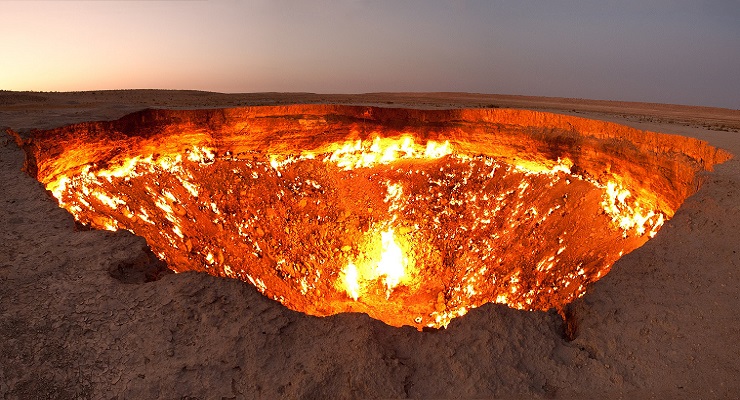
Little-known, Turkmenistan, a country led by a reclusive dictator, is a major source of the global climate catastrophe. This article by Aaron Clark and Matthew Campbell published by Bloomberg examines how. Here is an excerpt:
Carrie Herzog was sitting at her desk in Montreal one day in early 2019, studying satellite images for signs of mud volcanoes. These geological oddities, common around the Caspian Sea, can belch greenhouse gases. Herzog’s job as a technician at GHGSat Inc., a Canadian company that monitors emissions, is to identify individual pieces of the planet-warming puzzle. Her eye caught something strange on the edge of an arid, wind-scoured stretch of desert in Turkmenistan. Something that shouldn’t have been there.
Stretching north from a clutch of industrial structures in the former Soviet republic were two jagged slashes more than three kilometers long, captured by the satellite’s imaging spectrometer, an instrument that allows scientists to identify gases based on how they reflect light. Surprised, Herzog summoned a colleague. Then their superiors directed the satellite to take a closer look on its next pass. Emissions-spotters at SRON, a space-science institute in the Netherlands, agreed to examine data from one of their orbital monitoring systems. The additional measurements left the GHGSat team in no doubt. They had picked up one of the largest releases of methane ever observed in real time.
It appeared to be coming, in part, from Turkmenistan’s Korpezhe natural gas field, specifically from a compressor station, where gas is prepared for piping to customers. A researcher would later conclude that the leak had been active for more than five years. Since methane has more than 80 times the warming power of carbon dioxide when it first enters the atmosphere, this one leak had a climate impact roughly equivalent to the annual emissions of all the cars in Arizona. “We were really shocked,” says Stephane Germain, GHGSat’s founder and president. “We had something that was real and extremely significant.”
Read the full article here.
Leave a Reply